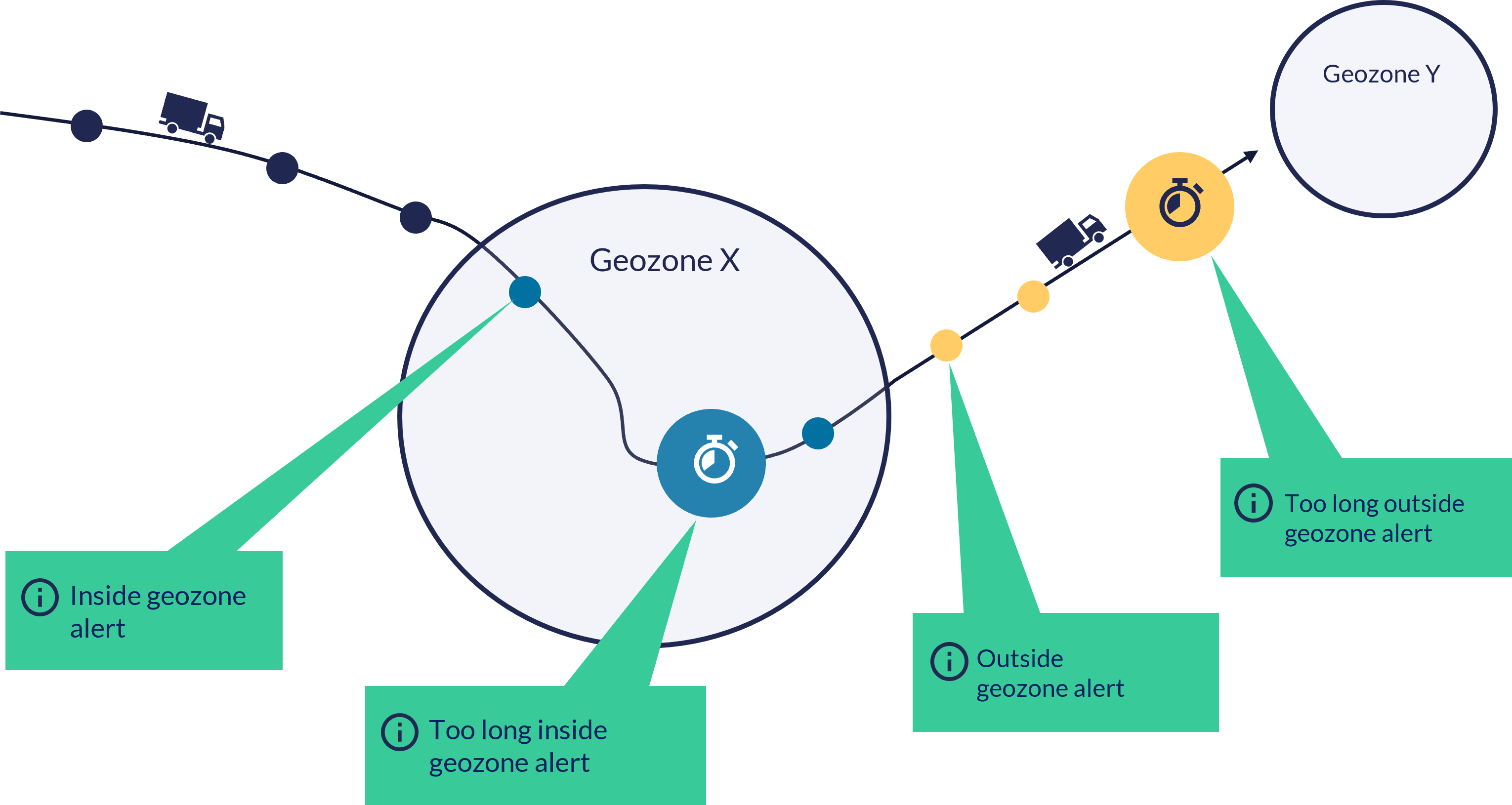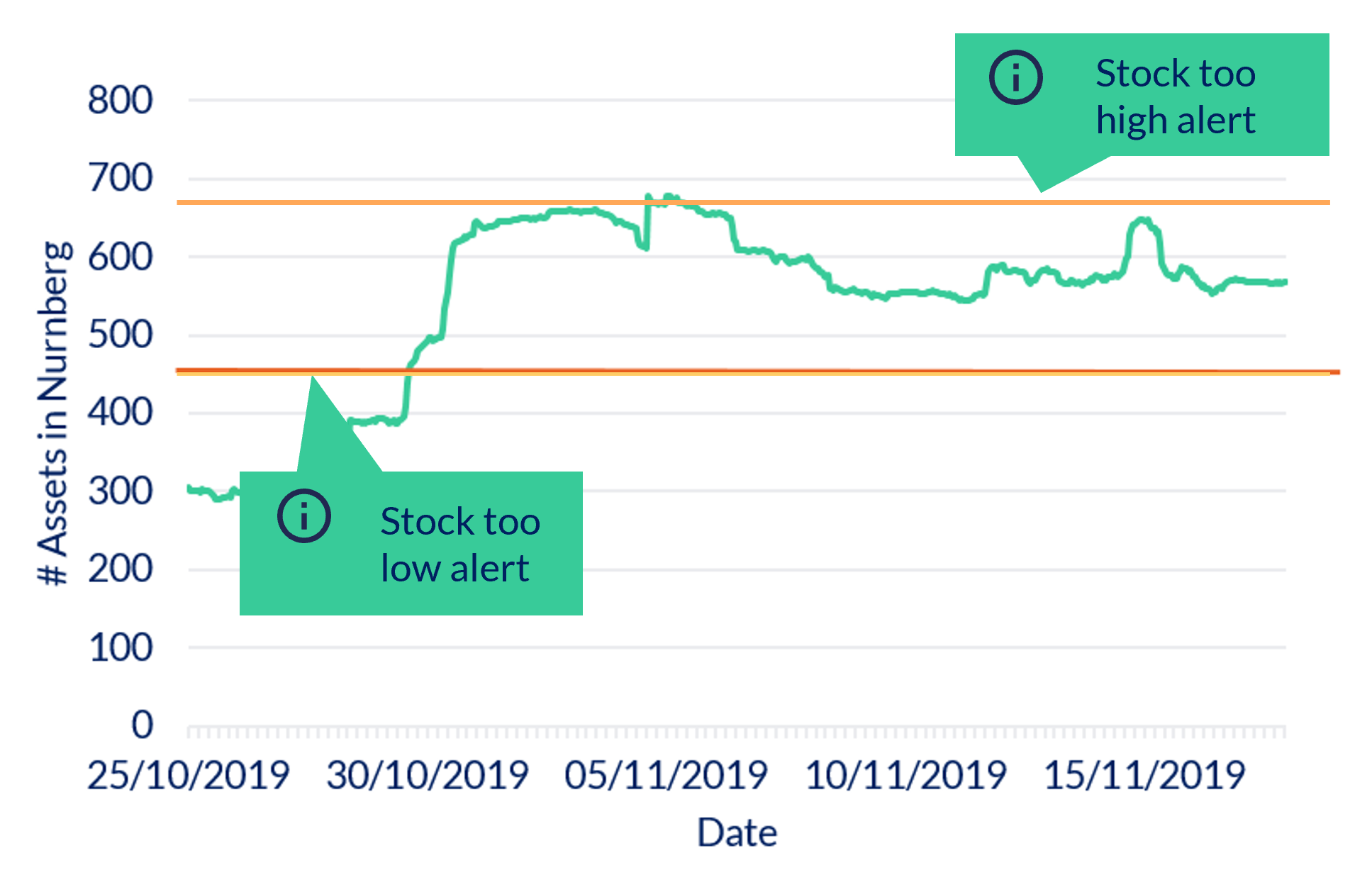Geozone-related alerts
What different alerts can be configured in for the geozones you have created?
Geozone information can be leveraged to enable alerting on events relating to your business processes. The advantage of alerts is that a user gets notified immediately when certain events have occurred. By notifying users that certain important events or conditions have occurred, you can greatly reduce the time spent periodically consulting and investigating the asset locations information.
The following alert types can be configured by monitoring the individual asset location relative to a specific geozone.

The following alert types are can be generated by monitoring the aggregation of assets in a specific geozone

These stock alert types are implemented by monitoring the stock levels of assets every 30 minutes.You can configure the threshold, as well as specific which specific assets are counted (by selection, or by filtering on asset tags).